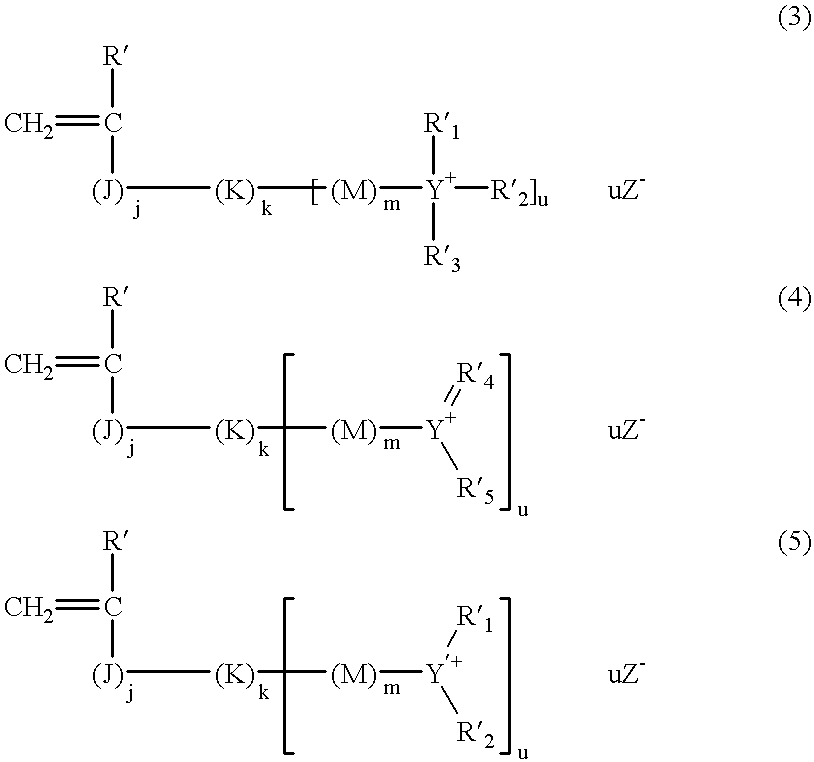Preparation method for lithographic printing plate
a technology of lithographic printing and preparation method, which is applied in the direction of photosensitive material processing, photomechanical equipment, instruments, etc., can solve the problems of airspace preventing the transfer of heat and inability to form, and achieve good properties with regard to the remaining color, printing durability and contamination, and the remaining film
- Summary
- Abstract
- Description
- Claims
- Application Information
AI Technical Summary
Benefits of technology
Problems solved by technology
Method used
Image
Examples
examples
[0315] Hereinafter, the present invention will be explained by Examples. But the present invention is not limited to these Examples.
Examples Using Nitrite Group-containing Compound
examples 15 and 16
, and Comparative Examples 5 and 6
[0342] After substrate A was treated according to Table 3 below, compound A was coated thereon as described in Examples 1 to 14 in an amount of 15 mg / m.sup.2 followed by being dried at 80.degree. C. for 10 seconds. Coating solution of photosensitive composition B (below) was prepared and it was coated on the undercoated substrate in an amount of 1.0 g / m.sup.2 to provide a presensitized plate for the preparation of lithographic printing plate. In table 3, the treatment with a solution comprising nitrite salt was conducted at 80.degree. C. for 1 minute unless specifically mentioned.
7 (Coating solution of photosensitive composition B) Capric acid 0.03 g Copolymer 1 (see below) 0.75 g m,p-Cresol novolak resin (ratio of m / p = 6 / 4, weight-average molecular 0.25 g weight: 3,500, containing 0.5% by weight of unreacted cresol) p-Toluenesulfonic acid 0.003 g Tetrahydrophthalic anhydride 0.03 g Cyanine dye A (see the chemical structure below) 0.017 g Dye deriv...
PUM
| Property | Measurement | Unit |
|---|---|---|
| temperature | aaaaa | aaaaa |
| temperature | aaaaa | aaaaa |
| temperature | aaaaa | aaaaa |
Abstract
Description
Claims
Application Information
 Login to View More
Login to View More - R&D
- Intellectual Property
- Life Sciences
- Materials
- Tech Scout
- Unparalleled Data Quality
- Higher Quality Content
- 60% Fewer Hallucinations
Browse by: Latest US Patents, China's latest patents, Technical Efficacy Thesaurus, Application Domain, Technology Topic, Popular Technical Reports.
© 2025 PatSnap. All rights reserved.Legal|Privacy policy|Modern Slavery Act Transparency Statement|Sitemap|About US| Contact US: help@patsnap.com



